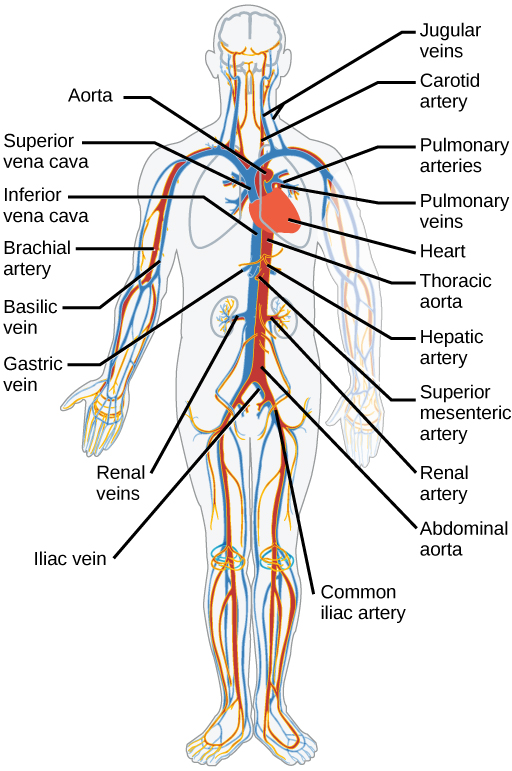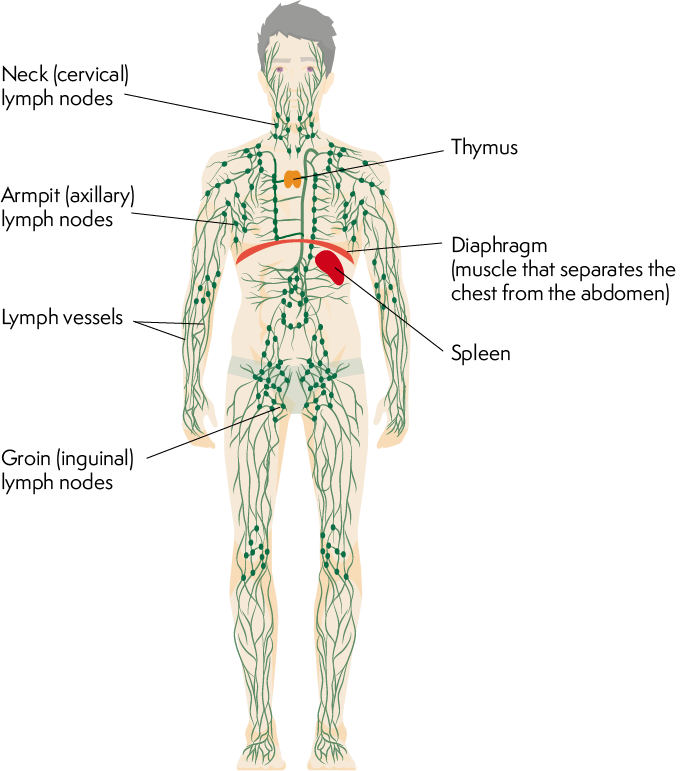What do they do?
The blood and lymphatic circulatory systems work together to deliver nutrients to, and remove toxins from, all the cells in the body. Blood is pumped under pressure around the body by the heart. Oxygenated blood leaves the heart via the body's main artery, the aorta, and is carried through a network of arteries to the smaller arterioles and then to the microscopic capillaries.
It's only at this level that an exchange of nutrients and toxins can take place between the blood plasma and the cells. The capillary walls are just one cell thick and allow the transfer of water, gases and other substances.
Once the plasma-derived fluid leaves the bloodstream, it is known as tissue fluid. At this stage, oxygen leaves the blood and enters the cells, and carbon dioxide passes into the blood-stream.
The de-oxygenated blood returns to the heart via small venules and then larger veins. This loop between the heart and body is called the systemic circulation. Blood is then pumped to the lungs to unload the carbon dioxide and collect fresh oxygen, before returning to the heart to begin the journey again. This pathway between the heart and lungs is known as the pulmonary circulation.

As well as gasses, oxygen and carbon dioxide, the fluid part of the blood called plasma, carries nutrients, vitamins and minerals, hormones and other chemical transmitters that deliver messages to the cells, plasma proteins involved in blood clotting, and immunoglobulins which are part of the body's defence mechanism.
There are three main types of blood cell:
- Red blood cells which carry oxygen attached to their red pigment, haemoglobin. Haemoglobin increases the blood's oxygen-carrying capacity by at least seven times.
- White cells, which are involved in different aspects of the body's immune system
- Platelets, which are the cells that trigger the clotting process. They 'stick' to damaged blood vessels and release enzymes that lead to the formation of a blood clot.
The blood circulation is also an important means of balancing the water content of all the body cells and is a major mechanism for transferring heat through the body. In the brain stem there is a control area known as the vasomotor centre, which changes the diameter of blood vessels to regulate blood supply to different parts of the body, according to requirements.
How the Lymph System Works
The lymph circulation is different from the blood circulation as it flows in one direction only - from the cells towards the heart. The larger lymphatic vessels run parallel with the veins, although they are smaller and buried more deeply in the tissues. One function of the lymph circulation is to 'mop up' excess tissue fluid that can't be carried away by the blood. Without the help of the lymph vessels, severe fluid retention (oedema) would occur, eventually causing thickening of the blood and waterlogging of the tissues.

Lymph nodes are bean-shaped structures found where large numbers of lymph vessels meet, such as the groin or the armpit. They are home to large numbers of specialised white blood cells and they act as filters for the lymph, destroying micro-organisms and waste particles before allowing the lymph to continue circulating.
Lymph is usually filtered by several nodes on its journey. Eventually most of the body's lymph enters a long vessel that runs upwards in front of the spine, known as the thoracic duct.
This empties into the blood in a large vein under the left collarbone. Any remaining lymph enters an equivalent vein on the right side of the body. Both these veins join the vena cava, a large vein which leads directly into the heart.
The lymph system is also an important component of the immune system, acting as a highway for highly specialised white cells known as lymphocytes - some of the most active cells in the body's defensive arsenal.
Stress and the Circulation
One of the body's responses to stress is to divert blood from areas considered non-essential in an emergency, such as the digestive system, the kidneys and the skin. This means that these organs will be unable to function normally until the stress response has subsided, so circulatory changes are part of a much bigger picture and can contribute to a wide range of stress-related imbalances.
Stress can have effects within the circulatory system itself. The heart is an immensely hard-working organ that requires an uninterrupted supply of blood to function properly. However, it cannot use any of the blood that it pumps through its chambers, and relies on the relatively small coronary arteries for its own supply. Long-term stress can lead to a narrowing of these arteries as they get 'furred up' by certain types of cholesterol.
If other arteries are affected, blood pressure may rise - a condition known as hypertension - and areas such as the lower legs may suffer from diminished circulation, leading to pain and poor skin healing.